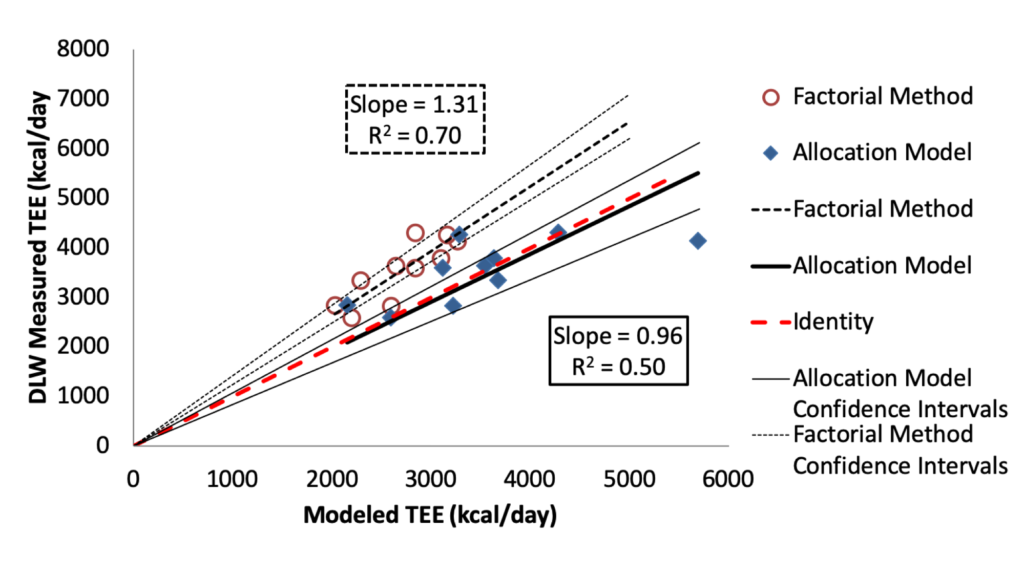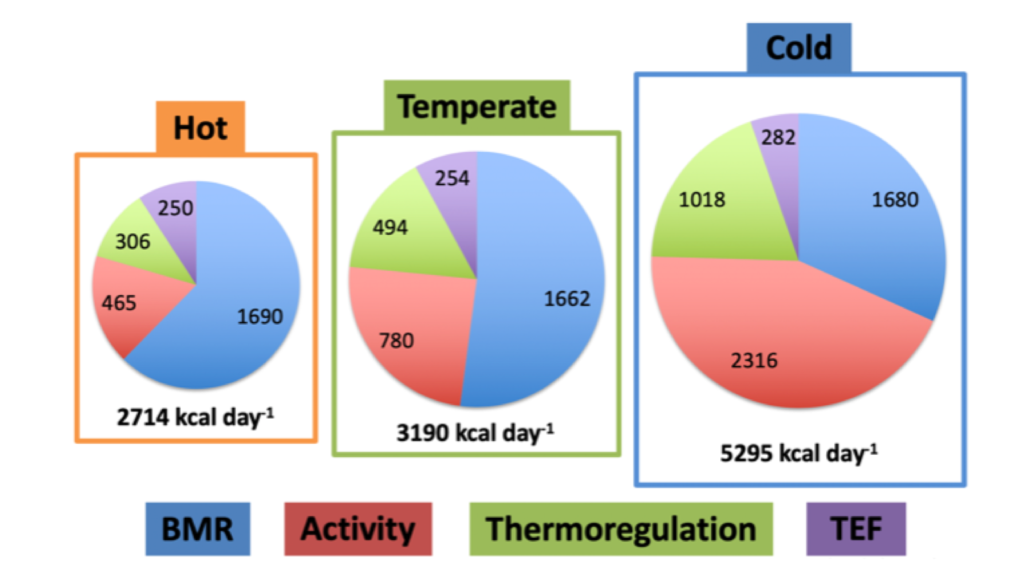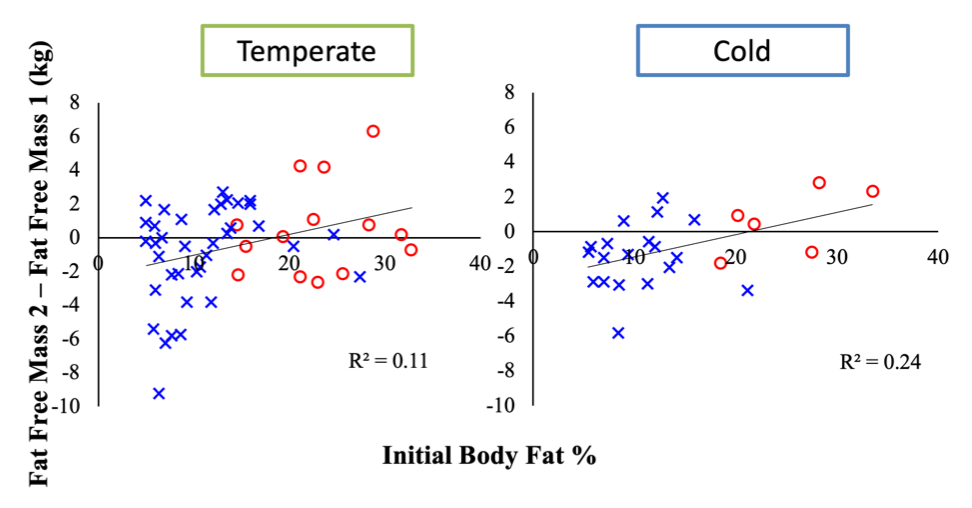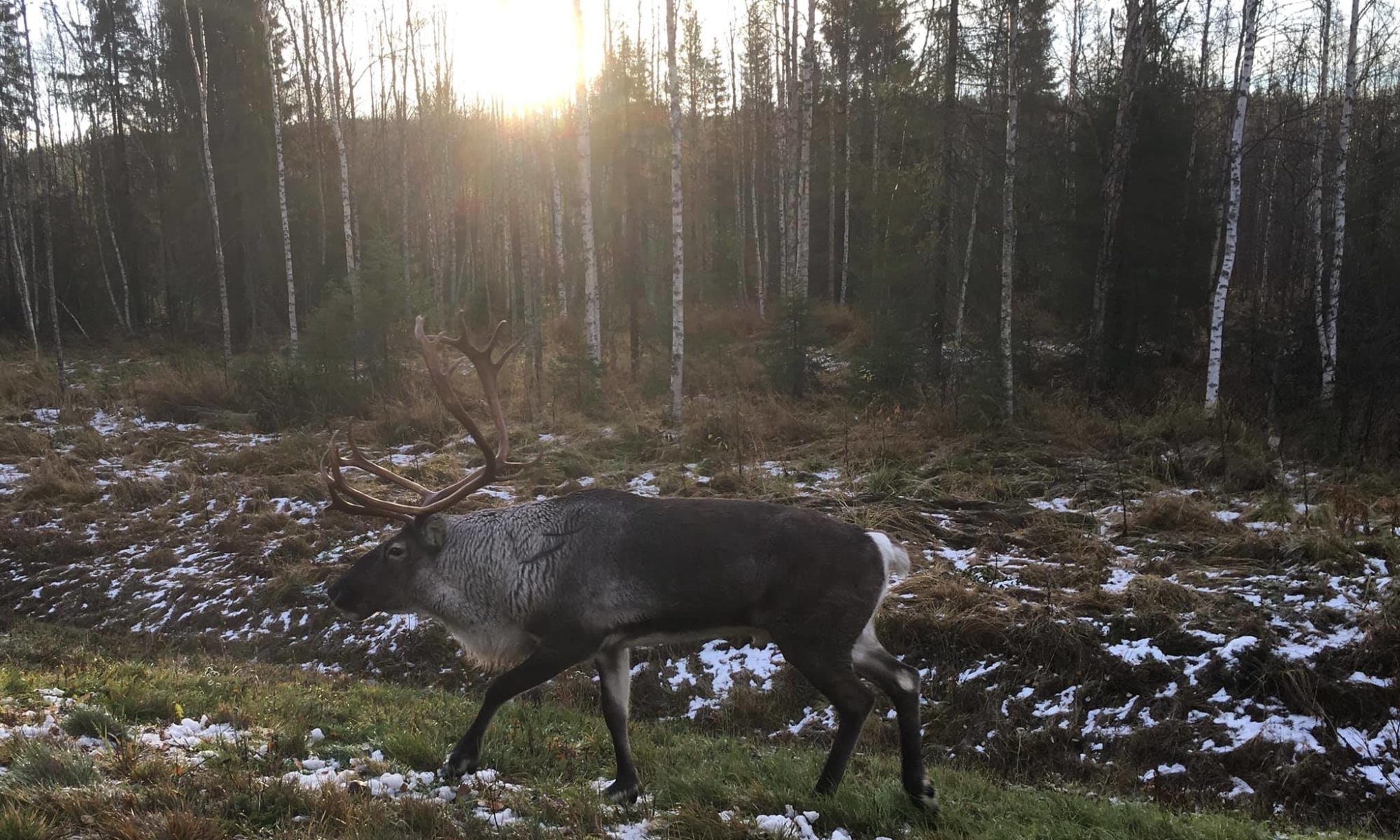
My interest in the energetics and physiology of people living in extreme cold climates arose from my dissertation (funded by the Leakey Foundation) work developing a new model, the Allocation and Interaction Model, for predicting human total energy expenditure. I tested this new model among National Outdoor Leadership School (NOLS) students who were highly active (hiking, mountain climbing, kayaking, etc.) and lived for extended periods of time in a variety of high altitude climates in the western United States.
This work resulted in 3 publications:
1) The Allocation and Interaction Model: a new model for predicting total energy expenditure of highly active humans in natural environments
Ocobock 2016
This work compared the Allocation and Interaction Model (AIM) to the Factorial Method – a commonly used method for estimating total energy expenditure – and compared both AIM and the factorial method to total energy expenditure measurements among NOLS students.
Main Take Aways:
– The Factorial Method does a terrible job estimating how many calories very active people use – underestimates by 30%
– AIM is a more accurate model – comes within 10% of total energy expenditure measurements.
– AIM is more accurate because it includes more specific activity costs, thermoregulatory costs, and the cost of digestion.

2) Human energy expenditure, allocation, and interaction in natural temperate, hot, and cold environments
Ocobock 2017a
This work focused on how NOLS students allocated their energy (physical activity, thermoregulation, resting metabolic rate, and digestion) and how that allocation varied in different environments.
Main Take Aways:
– Living and moving around in a cold environment costs A LOT of calories (~4,300 kcal/day)
– However, it is not really the cold (thermoregulatory costs) that make the calorie burn so high, but how difficult it is to move around a snowy, mountainous environment. Cross country skiing and snow shoveling are metabolically demanding activities.
– All the energy spent on moving around that cold environment actually helps keep you warm – demonstrating how different metabolic activities interact with one another.

3) Body fat attenuates muscle mass catabolism among physically active humans in temperate and cold high altitude environments
Ocobock 2017b
NOLS students are the first to tell you that they lose a lot of weight when they are on these courses. However, we were unsure what they were losing (muscle vs. fat) and if some individuals may be more protected from that loss than others. We looked at body mass, muscle mass, and body fat percentage before and after NOLS courses.
Main Take Aways:
– NOLS students are at risk for losing both fat and muscle mass
– Those who had more body fat at the beginning of a course lost less (or even gained) muscle mass
– Dietary protein had no impact on the amount of muscle mass lost – students were eating too few calories that it didn’t matter where those calories came from. They were in a negative energy balance and had to rely on their own energy stores.

